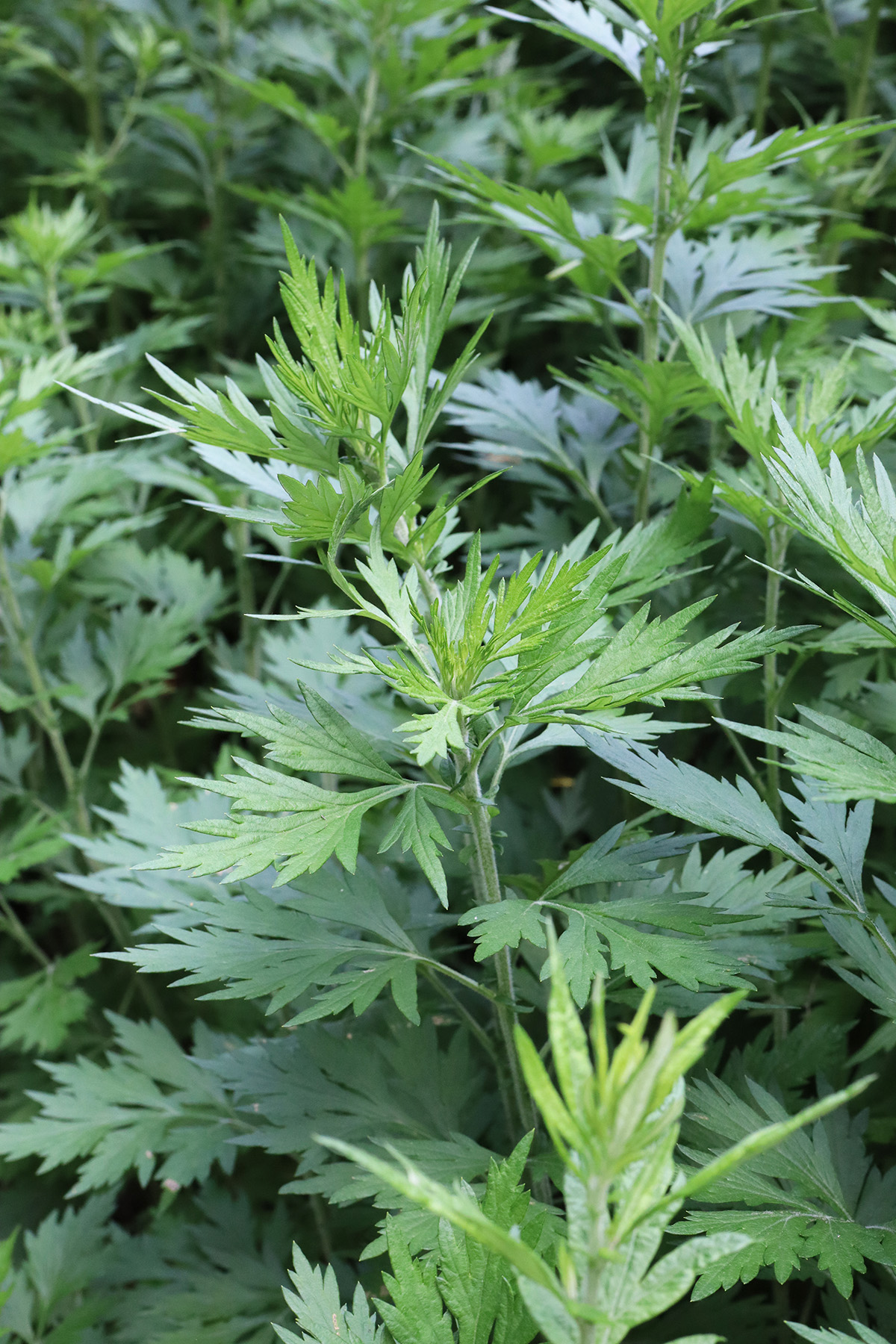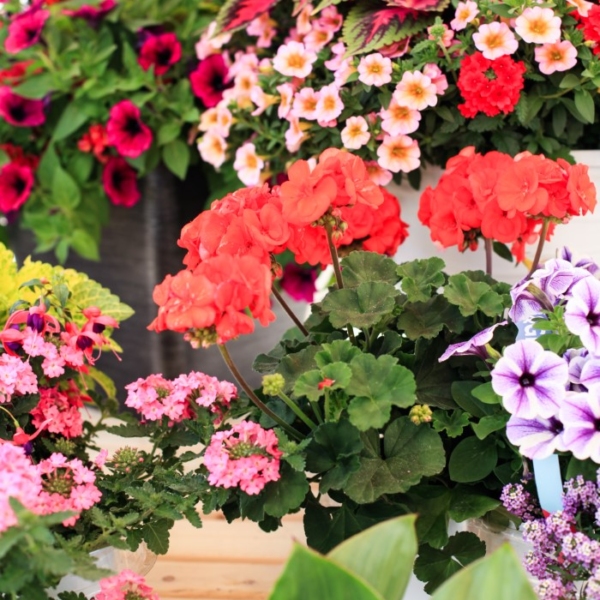The chances are good that you are surrounded by Artemisia vulgaris. Native to Eurasia, mugwort is highly invasive in North America, displacing swathes of native plants unable to compete with its perennial spread, fueled by an extensive underground rhizome system. But mugwort is also a sage-fragrant and very palatable wormwood. It is rarely used in American kitchens, despite being a culinary herb in parts of Europe, and well known in Korea (where it is called ssuk) and in Japan (yomogi), where a closely-related species (A. princeps) is prevalent and familiar in cooking as well as in traditional medicines. In my forage-inspired kitchen, mugwort is a standard herb.
Join the invasivores. Eat this weed.
Photography by Marie Viljoen.
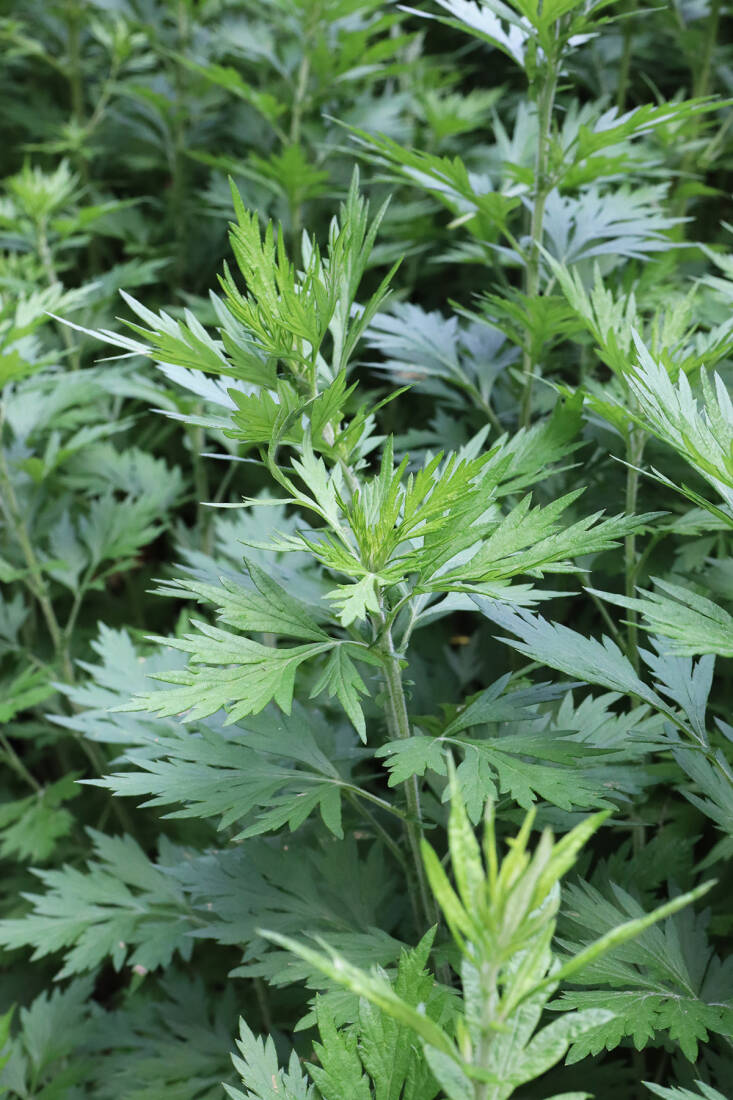
The first thing I was told about mugwort by a local forager on a walk in 2009 was that it would induce vivid dreams if I put it under my pillow. My dreams seemed unaffected. People do smoke it, and dried mugwort is used in moxibustion. Me, I just eat it.
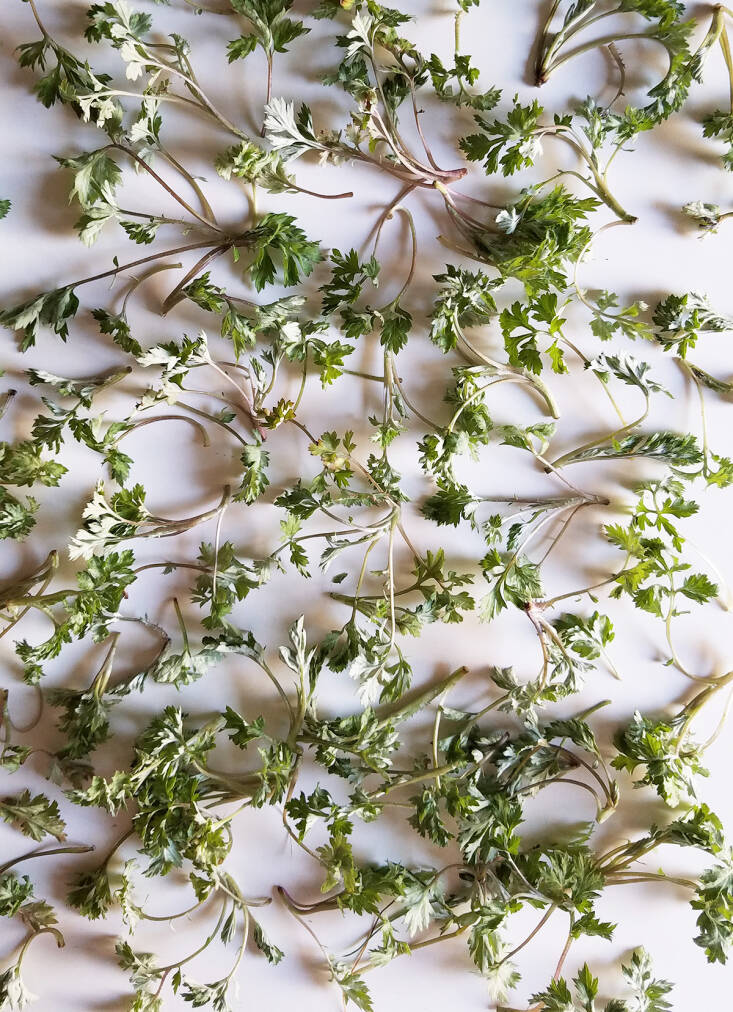
Mugwort has a long growing season, and multiple useful parts. In very early spring it emerges with soft, silvery leaves at the base of the previous year’s dead sticks. The new leaves can be picked entire and wilted or tempura’d; they have a mild flavor.
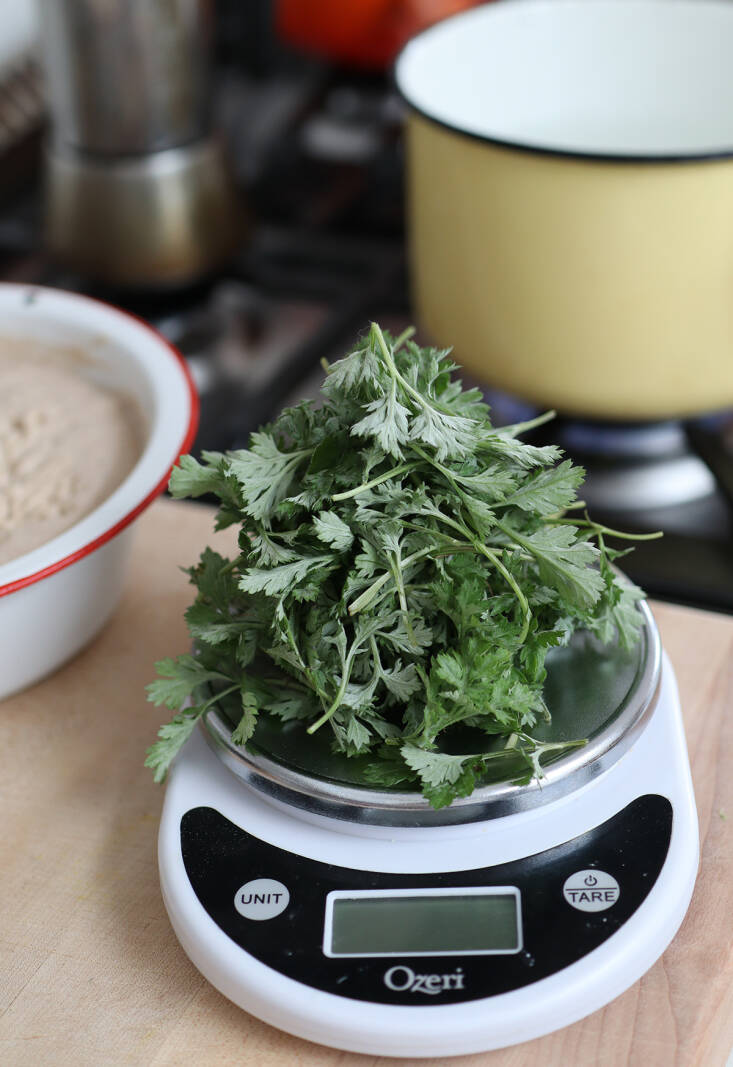
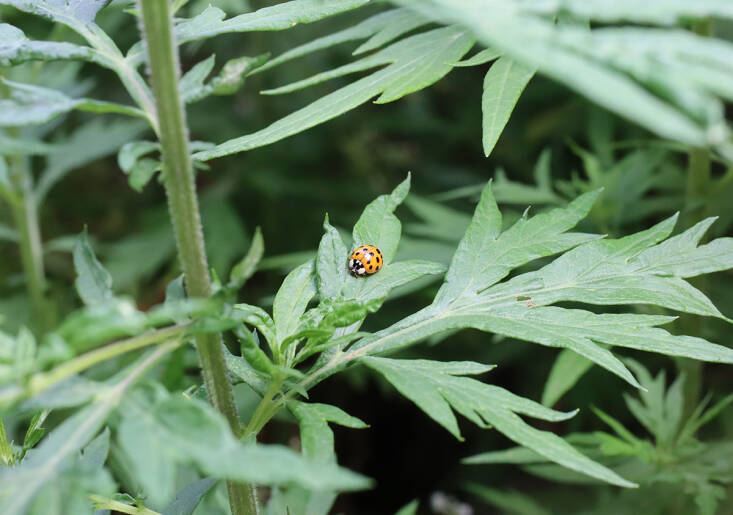
By midsummer mugwort has grown to a couple of feet tall—its stems sappily tender and green, and its flavor and scent stronger. The stems can be added entire to braises, curries, and marinades, chopped into stuffings, or put to infuse with red fruits and vodka (scroll down for the recipe). Mugwort leaves are the grounding ingredient in my seasonal vermouths. European vermouth derives its name from Wermut, German for “wormwood.” And Beifuß—the German name for mugwort—is sold as commercial herb in that country, both dried and fresh. In Croatia it is divlji pelin and a traditional ingredient in white-hot digestifs.

The tender early summer leaves can also be crisply fried and used to top a host of summer sandwiches.
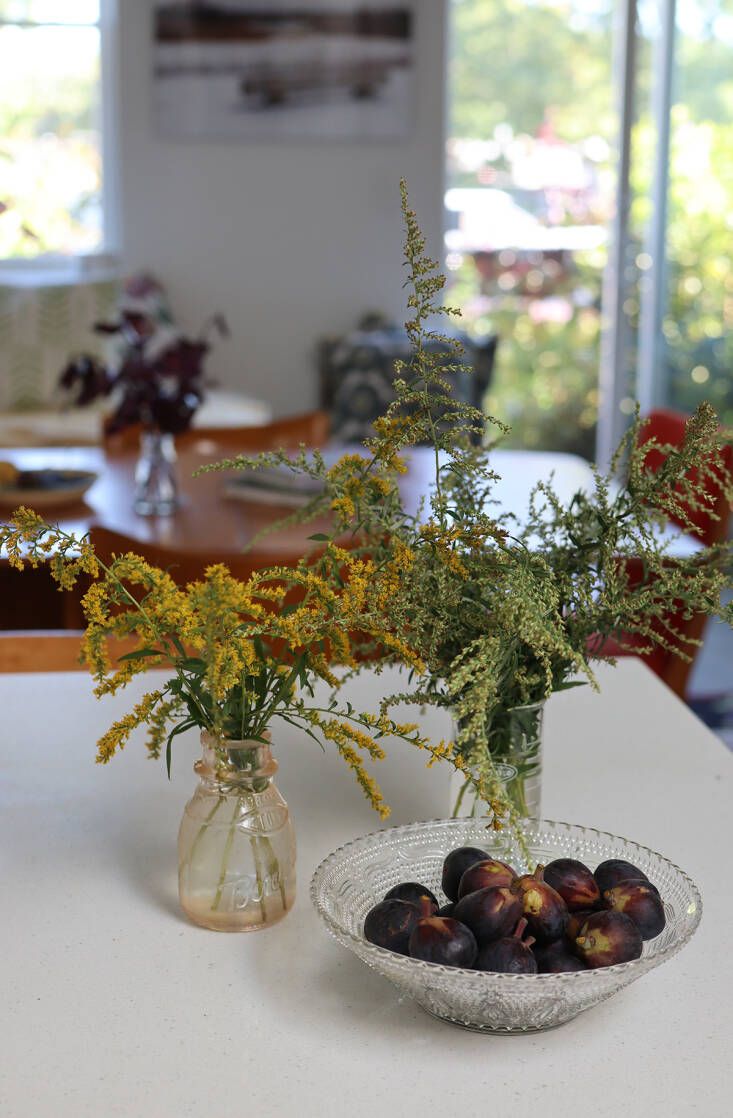
By fall it is flowering and now mugwort’s strong, woody stalks can be over four feet tall. It is easy to see why native plants find it impossible to compete. Collecting the flowers and tender seeds is satisfying: simply run a hand backwards down a stalk to strip them off; this is the stage of mugwort I like to dry for use through winter: It flavors a slow-cooked, ritual pozole that I make to carry on a freezing walk to greet each New Year’s Day. And mugwort salt is a staple seasoning, delicious with eggs and scattered across roast potatoes.
